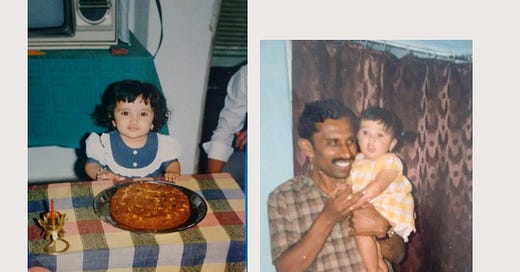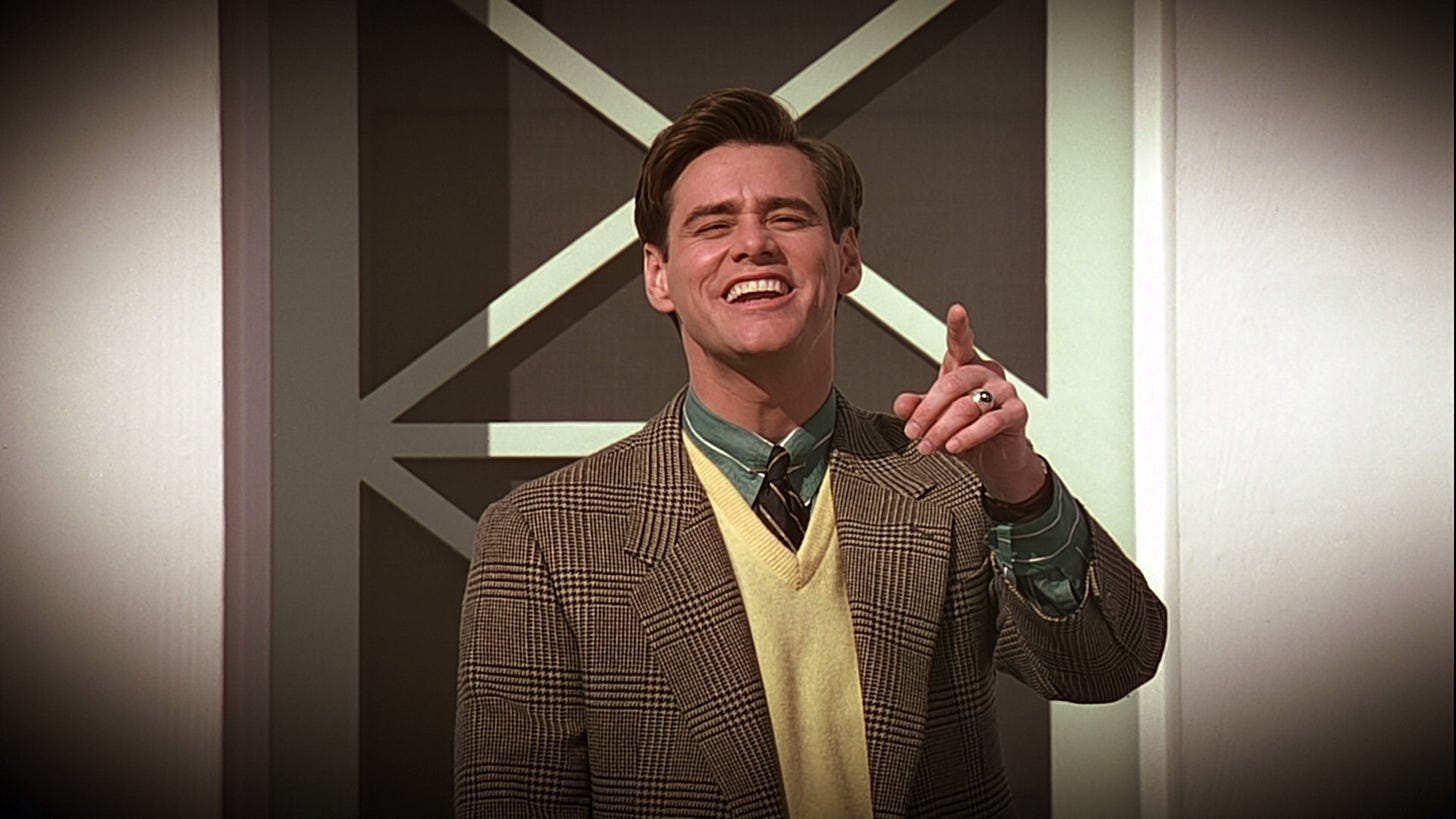The year was 1987. The city was Jabalpur. In a local nursing home, a baby was born and denied the opportunity to become famous. I was that baby. When I came out of my mother’s womb, feet first, I was chubby and possibly cute.
Cute enough for my mother’s doctor to suggest my photos be sent to the Farex or Cerelac people so they could put it on the tin of their baby food product. My mother and my grandmother first took pride in their accomplishment of being associated with a cute baby.
Then they both panicked at the thought of having my face plastered for the world to see. What if I became a victim of someone’s ‘evil eye’? What if someone tried to kidnap me? What if someone cast black magic on me? What if our baby met the fate of the Murphy Baby?
Do you know who that was?
Murphy Baby
In the days of no social media, news travelled through the whisper network in India. One such news that gripped the country in the 70s was the myth of the Murphy Baby. The Murphy Baby, for those who don’t know, was the kid whose photo was plastered on the Murphy Radio. His photos would be part of the Murphy radio advertisements, there were Murphy Baby calendars too, and people collected pictures of the baby because of his cuteness.
My grandmother was one of them. It was part of her eccentric collectable items list which included broken mirror pieces, pencil stubs, tiny plastic bottles that I used to collect shiny rocks from the sand found on construction sites, and a cutout of the Murphy baby.
The Murphy baby was popular. So popular that in the film Barfi, Ranbir Kapoor’s mother wants a child like the Murphy baby and wants to name him Murphy.
“बर्फी जब अम्मा जी कोख में था सोया
अम्मा ने मर्फी का रेडियो मंगाया
मर्फी मुन्ना जैसा लल्ला अम्मा का था सपना”
The name "Barfi" originates from Ranbir Kapoor's character's inability to pronounce "Murphy" clearly due to his hearing and speech impairment. He can only say "Barfi," and this name becomes his identity. This detail also subtly establishes the film's setting in the 1970s, as "Murphy" would have been a recognisable and common name during that era.
Much like Barfi’s mother, several mothers in India wanted a child as cute as the Murphy baby. They had, however, heard rumours of the death of the Murphy baby. And had concluded that it was because of an entire country’s ‘buri nazar’ or evil eye. The original Murphy baby, a little girl, the daughter of the Murphy family, did die. Her photo was later replaced with that of Kagyur Tulku Rinpoche’s photograph. But the rumour of the dead Murphy baby prevailed. If you believe my grandmother, that and not the growing popularity of television, is what brought the brand’s demise.
For my grandmother, the death of the Murphy baby was personal. She had lost her 3-year-old daughter who was as cute as the Murphy baby. This loss made her believe in several superstitions about children. Those superstitions later became part of my poetry. But also the reason why I couldn’t become the Cerelac Baby.
Baby Truman
The popularity of babies, their cuteness and vulnerability being exploited under capitalism is an old script. The Truman Show pushes the idea to an extreme. Unlike the Murphy Baby whose photos were used to sell radios, calendars, and later a TV called Murphy Munna, Truman Burbank is born and raised solely to be consumed.
This 1998 film predated and even predicted our future obsessions eerily accurately. The film that happened at the cusp of the reality television fad foresaw the idea of shows such as Keeping Up With The Kardashians. A daytime television show that was on air for over a decade and followed a similar fashion of tracking the lives of the Kardashian family. The only difference was that the Kardashians were grown adults fully aware of their circumstances. Truman, however much like the Murphy baby, isn’t.
“There is no difference between a private life and a public life, my life is my life,” says Laura Linney’s Meryl Burbank. Meryl plays Truman Burbank’s wife. The film begins with interviews of actors who play their parts in Truman’s life on The Show, calling it a lifestyle. Nothing on the show is “fake” but merely “controlled”.
However, the extent of the control can be seen in the Easter eggs planted throughout the film. For instance, Truman has never really been exposed to natural sunlight, rain, or actual weather. Without sunlight, his vitamin D levels will plummet, affecting his quality of life. To fix that, Truman is fed Vitamin D supplements, which can be seen placed next to him in several shots.
Product placement is a regular part of cinema. We often see things like Coke bottles, coffee bottles or airline names in the middle of a film. The Truman Show is a show within the film. The Show naturally has sponsors whose names have to be showcased.
A scene that stayed with me the most was where Meryl, terrified of Truman losing his temper, breaks into an ad for the Mococoa chocolate drink. She feels threatened but has a product to sell to get her paycheck. The job of an entertainer never ends. There isn’t a bigger statement of life under capitalism than this one.
This scene reminded me of all the child influencers being made to sell baby products on the internet. In The Truman Show, Truman is confused about his wife’s actions. Where is she looking, and who is she talking to, he wonders. That is how I imagine these babies must feel when their parents break into an ad for a product in the middle of the videos.
Internet Babies
Remember when kids would be asked to dance in front of the guests? Those were really simpler times.
(Here’s a video of Master Raju entertaining guests with his killer moves.)
Cut to today when children are ubiquitous on YouTube and Instagram. They are seen performing various roles—singing, dancing, cooking, and reviewing toys—not always out of choice. They are too young to understand the idea of consent, so it has to be said that all of this is done due to parental pressure. These children are often unwittingly transformed into marketing tools, promoting brands, instructors, or family businesses in the pursuit of "kidfluencer" status and the associated financial rewards.
An adorable child called Tao Tao is immensely famous on Instagram. Her videos make it to my feed very often, and I have to admit looking at her cute antics brings me a rare dopamine rush. But that rush soon subsides and fear takes over. Fear for the child spending her entire life in front of a camera. She is looking at her parents who are always behind that camera. People are commenting on her hair, her cheeks, her nose, her chubby hands and thighs, and some even asking her mother to feed her less.
The camera rarely leaves her. She cannot eat, sleep, wake up, pee, poop, fart without the camera recording it for laughs. Her feed has comments from her fans wanting to hug her, meet her once and pull her cheeks. Other Instagram page owners use her videos to make profits. Sometimes, it is the parents who sell the rights, other times they are stolen.
The relentless presence of children on the internet is a huge cause for concern. As this The Conversation article points out, it leads to troubling trends, including:
a lack of online privacy for kidfluencers, who have many aspects of their lives publicised online
the commodification of children, and the enabling of a culture geared at up-selling their products and services
the gendered marketing of toys and an increased focus on appearance for girls (which can be harmful to their self-esteem)
the “stealth” marketing of toys and other products through advertorials.
Several countries like Australia, France, China, Germany, and Norway, among others, have tried to establish regulations to protect child rights, but it is a tricky area. Instagram already mandates that the user needs to be over the age of 13. But how does that curb the parent from creating such an account?
Initially, the efforts to restrict minors' internet access focused on pornography and gambling. These efforts have intensified since a 2021 leak of internal Meta emails suggesting the company knew its products harmed young users. Much like all allegations against the platform, Meta has disputed these claims.
As a survivor of child sexual abuse, I'm deeply concerned about the potential for these children to be targeted by predators online. Recently, a video of Tao Tao appeared on my feed. The baby, just waking up, was being filmed by her mother, who then lifted the child's t-shirt and pointed to her belly. Seeing the comments about how "adorable" she has filled me with dread, thinking about the predators who might be watching.
As a 2024 New York Times report on child influencers cited: “What often starts as a parent’s effort to jump-start a child’s modelling career or win favours from clothing brands, can quickly descend into a dark underworld dominated by adult men, many of whom openly admit on other platforms to being sexually attracted to children.”
Children always have been and always will be vulnerable. It is this vulnerability that opens them to such grave exploitation. The second Murphy Baby’s photos, for example, were clicked and used without the consent of his parents. They were later compensated handsomely. This doesn’t dispute the fact that this was a grave violation.
Murphy Baby’s cuteness was used to sell a few products without his knowledge. And today, the internet babies are being used to sell lifestyles. Even as Truman, at the end of the film, walks towards his freedom, it isn’t possible to imagine him truly free. That is true for every child influencer growing up in front of the prying eyes of the internet.
Then how do we keep these children safe?







This needed to be said. So many baby oriented accounts out there and I'm scared for each and everyone one of those tiny tots. They have no idea that their body is being exhibitioned without their consent.